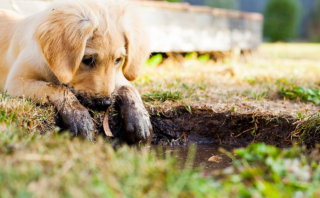Easy Steps for Kids to Train Your Furry Friend Successfully
Dog training can be a family adventure, an opportunity to both strengthen the bond between your pet and all family members, especially kids. Not only does it instill a sense of responsibility in children, but they also learn empathy, compassion, and care. It’s important to understand the dos and don’ts when it comes to dog training for kids. So let’s delve into this topic more deeply.

The Role of Kids in Dog Training
Children can play a major role in dog training with most suitable tasks, depending on their age. Younger kids can help in simple commands like “sit” and “stay,” while older children can participate in advanced training exercises like “heel”. Remember, the training should be fun and enjoyable for both the dog and the kid. Keep sessions small and frequent for best results. The goal is for your child to become a leader in your dog’s eyes. Above all, always supervise these sessions to ensure safety for both the child and dog.

Positive Reinforcement
Emphasize positive reinforcement. Just like kids, dogs learn better when they’re rewarded for good behavior rather than punished for bad behavior. Teach your child to use small treats, praise, or petting as rewards. If the dog fails to follow the command, don’t let your kid shout or punish the dog. Keep the atmosphere gentle and turn the situation into a teaching moment.
A Bespoke Training Approach
Each dog possesses a unique personality, so the training method should fit your dog’s specific needs. Know your dog’s limits and have your child respect them. Things might not move as swiftly as you might want them to, but patience is key in dog training.

Training Aids
Choose the right training aids. Training aids like leashes and dog training clickers can simplify the process. However, ensure to teach your child to use these tools properly. Irresponsibly used, they can cause more harm than good. For instance, a leash yanked too hard can cause a dog distress.
Safety First
It’s crucial to monitor all interactions between your child and the dog. A well-meaning child could instinctively pull a tail or poke an eye, which might scare or provoke the dog. Teach your kids to understand a dog’s body language and signs that say the dog has had enough.
FAQ
Before we conclude, here are some common questions about dog training for kids:
- At what age should a child start participating in dog training?
There’s no set age, but usually, children above the age of 5 can take part in basic commands. Older children, from age 12 and up, can participate in more complex activities, always under adult supervision.

- What if my child is scared of dogs?
This is common and can be solved gradually. Encourage small interactions, like petting the dog, to help them get more used to being around dogs.
- Can my child train our dog alone?
Adult supervision is critical. Therefore, avoid leaving the child alone with the dog during training sessions.
- What should we do if training isn’t going well?
Patience, practice, and consistency are necessary for training. If you’re still struggling, consider bringing in a professional dog trainer.
- Is it necessary for every child in the house to train the dog?
Each family member should actively participate in dog training to create a consistent environment for the pet.

Conclusion
Dog training by kids is a beneficial activity for both dogs and children. It instills responsibility and empathy in the child while making the dog understand and respect all family members alike. Monitoring, patience, and most importantly, love and respect towards the animal are critical in making this training successful. The bottom line is that it should be an enjoyable process rather than a stressful task. Happy training!




